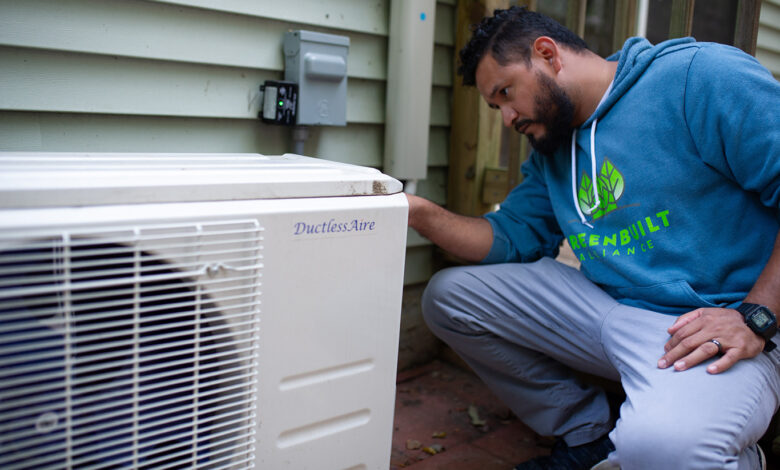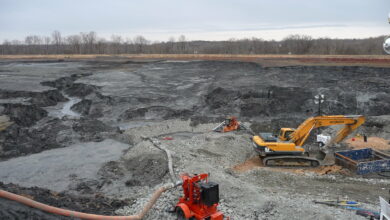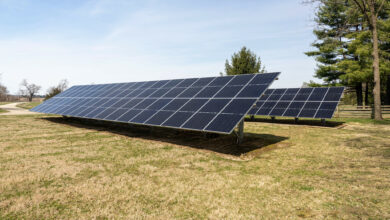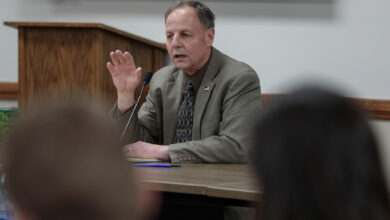How an Asheville nonprofit is working to reduce energy burdens in Buncombe County, N.C.

As the first frost visits the mountains of western North Carolina, thousands of households are bracing themselves. Thinly insulated manufactured homes will provide little barrier to the cold. Gaps around doorways will invite it in. Old furnaces, if they work at all, will consume already strained monthly budgets.
A lucky fraction of these families will benefit from a flood of federal weatherization dollars headed to the state thanks to the bipartisan infrastructure law passed two years ago.
But for Buncombe County residents who don’t or can’t take advantage of the decades-old Weatherization Assistance Program, there’s an innovative nonprofit in Asheville working to fill the gaps.
Since 2017, Energy Savers Network has helped some 1,000 households cut down on energy waste by tightening air seals, adding DIY storm windows, and performing other upgrades at no cost to occupants.
Designed to help complement, not supplant, federal weatherization funds, the project’s success is due in part to its speed and simplicity. And its track record has earned it a prominent place in Buncombe and Asheville’s plans for 100% renewable energy.
“By embracing local, clean energy sources, going electric and saving energy,” said Buncombe County Council Chairperson Brownie Newman, in a press release, “we’re taking essential steps toward combating the climate crisis while ensuring a just transition for all residents.”
Distributed largely by community action agencies formed during the War on Poverty, weatherization assistance has evolved to become one of the federal government’s most successful energy efficiency programs, helping some 7 million low-income households nationwide reduce energy waste since 1976.
But deploying assistance still presents a host of challenges: identifying potential recipients and earning their trust, hiring and training the workers who can perform the work, and remediating homes with immediate health and safety repair needs. Clients-to-be in Buncombe County may spend a year or more on a waitlist.
Though southwestern North Carolina is set to receive $4.8 million over five years as part of the state’s $90 million share of the infrastructure law, just 440 single-family households are expected to benefit over the 13-county region.
With some 18,000 families living in energy-inefficient manufactured homes in Buncombe County alone, the demand for energy efficiency upgrades far exceeds the supply of assistance.
That’s where Energy Savers Network comes in. The concept began 100 miles west in Hayesville, where members of the Good Shepherd Episcopal Church “answered a combined moral calling to help the poor and be good stewards of Creation,” Interfaith Power and Light wrote.
The team of parishioners and other volunteers helped families cut their energy use by 10% to 20% — first conducting an audit, then tracking down free or low-cost materials, and finally performing simple upgrades like replacing lighting or adding weather stripping free of charge.
When church member Brad Rouse, a one-time financial and utility consultant, decided to devote his time to climate causes and move to Asheville, he brought Good Shepherd’s idea with him.
Today, the Energy Savers project is staffed by a small team at the Green Built Alliance, but the volunteer spirit and the simplicity remain.
At farmers’ markets, community events, and through word of mouth, potential clients indicate interest. Staff then follow up to ensure they meet the income guidelines and can otherwise benefit from energy efficiency upgrades.
“We do a lot of the intake over the phone,” said Hannah Egan, the project’s outreach and resource manager, “explaining what we might be doing, what we need from them, how long the appointment could last.”
A visit is scheduled. A staff person and two to three volunteers arrive and do what they can accomplish in a day. “Once we’ve qualified the client over the phone, we just go there with our crew,” Egan said. “It’s just a lot easier to do it all in one go.”
They seal air leaks. They replace lightbulbs, insulate hot water heaters, and reinforce single-paned windows. “And then more as we see fit,” Egan said, “because every home is different. Our goal with that is to make homes more comfortable, reduce their energy usage and their utility bills.”
On average, the improvements help occupants cut energy use about 15%, fueling a virtuous cycle. “A lot of times, when we do get in their homes,” Egan said, “they’re really happy with the work we do,” prompting friend and family referrals. “That’s been a main source of client recruitment since COVID.”
Hiring building performance expert Kelvin Bonilla onto the Energy Savers team, Egan said, “drastically improved the quality of our work.” A native of Honduras, Bonilla has also helped spread the word to the county’s sizable Spanish-speaking community.
“He’s a really good people person,” Egan said. “He’s very professional, and he knows how far to go and when to stop.”
Many times, Energy Savers refers clients to Community Action Opportunities, the local provider of weatherization assistance. In some cases, they can return to repair or replace ailing furnaces with high-efficiency heat pumps. Dogwood Health Trust also funds minor home repairs, such as replacing a door or damaged flooring.
With additional support from Duke Energy, the city and the county, the team serves roughly four households a week and nearly 200 a year. From start to finish, the process takes between two and six weeks.
Moving forward, the hope is to both expand the scope of work and serve as a model to other communities. “We asked for an increase,” Rouse said. “There’s still a little bit of a hole. In order to expand the way we would really like to expand, we need more money.”









